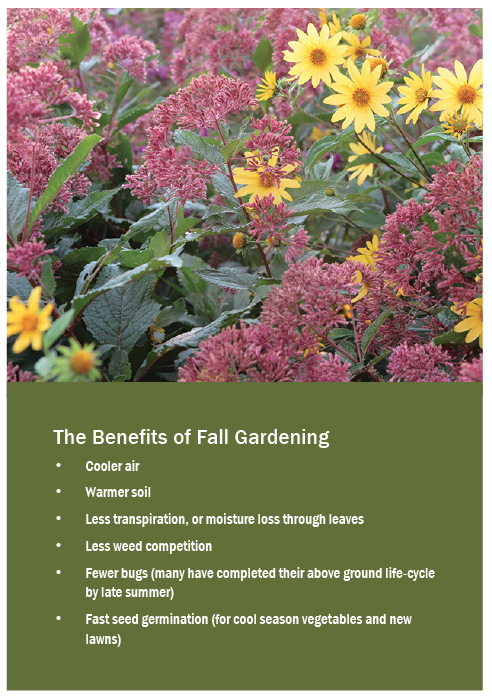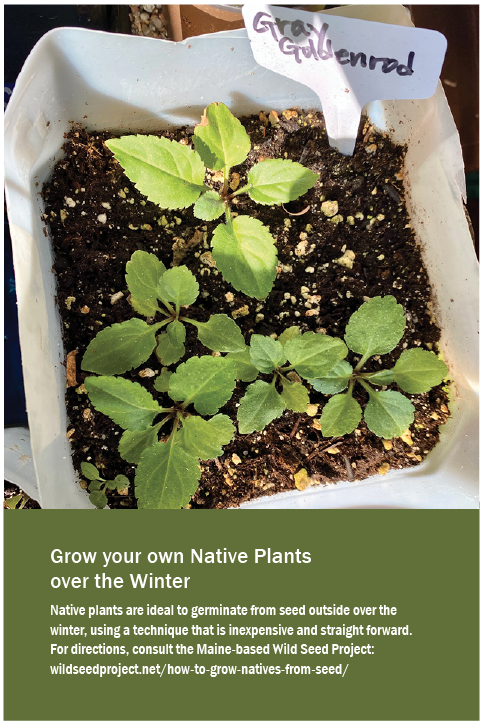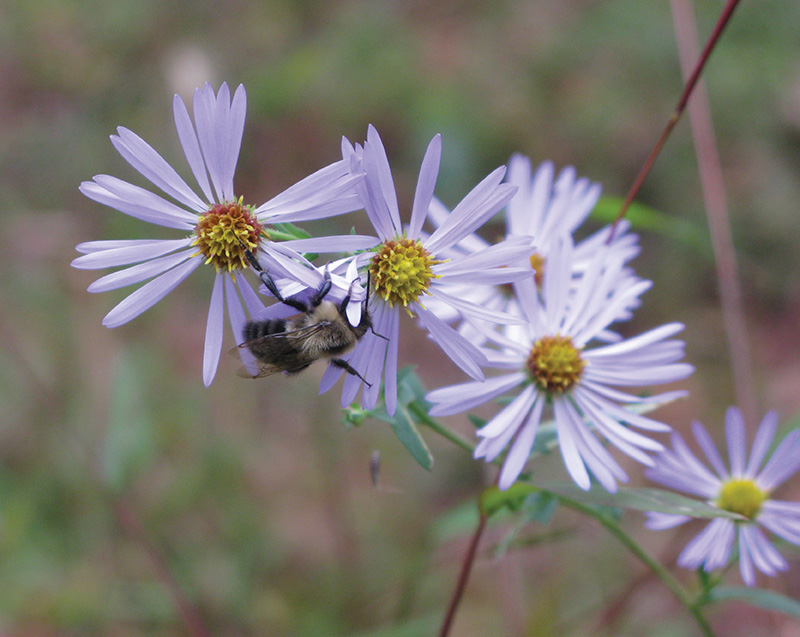
The Best Time to Garden

Fall Aster.
Those familiar cinnamon plumes, waving in unison from their towering vantage point above our marshes and sand dunes, were not always so abundant, or robust. In fact, there was a time when this plant was barely noticeable as a member of our native marsh plant community.
Fall weather is always a relief in the garden. Yes, the long evenings are coming to an end, but so are the heavy humid days and unrelenting sun—conditions that many plants may favor, but not all gardeners.
As it turns out, fall is considered by many to be the best time for gardening. Back to milder temperatures and more consistent moisture, it is an ideal time to fill in gaps, shift to cooler season vegetables, or reseed your lawn.
The entire first half of autumn (and then some) provides ample opportunity for plants to grow roots that will see them through the winter and be well positioned to thrive next spring. Unlike spring, the soil temperature in fall is warm. Even when the vegetation above ground stops growing (when the air temperature averages around forty-eight degrees), below ground roots remain active in soil temperatures as low as forty-five degrees.
 And root development is key: a healthy network of roots reaches further into the soil to access moisture and nutrients that can make all the difference once next summer arrives. A healthy root zone, packed with diverse and abundant micro-organisms, is more resilient to drought, pathogens, and pests. Fall planting enables your plants to get an extra six or seven months of root growth before summer, versus spring planting.
And root development is key: a healthy network of roots reaches further into the soil to access moisture and nutrients that can make all the difference once next summer arrives. A healthy root zone, packed with diverse and abundant micro-organisms, is more resilient to drought, pathogens, and pests. Fall planting enables your plants to get an extra six or seven months of root growth before summer, versus spring planting.
Some Rules of (Green) Thumb
The good conditions in fall make it an opportune time to divide plants that have become too large, or are in the wrong location. Despite the perceived wreckage of the act of dividing, if it can be done up to six weeks before the ground freezes, the plants will still have the opportunity to get their roots in order before they senesce for the winter, and that will enhance their chances once spring arrives.
And fall is ideal for getting bulbs in the ground—what better act of hope is there for the promise of new life, and color, after winter? Consider planting bulbs where you have late growing spring perennials such as ferns or anemones, or under the outer skirt of shrubs. As the late bloomers come to life, the bulbs will enjoy the protective shade and moisture of the next wave of plants.
If you are an overly enthusiastic spring gardener who, like myself, may collect potted plants that you don’t always get in the ground before summer, fall is your moment. That thin plastic pot will not do over the winter. Even if you decide to transplant in the spring to a different location, your plant will have a much better chance of surviving in the ground over the winter.
Of all the seasons that manufacturers recommend feeding your lawn, only fall has the blessings of university researchers who specialize in nutrient pollution to receiving water bodies—and ultimately our coastal estuaries. Ideally, fertilizer would be applied no more than twice a year, no later than October 15th, with the best overall one-time application between mid-September through mid-October.
Before fertilizing, be sure that your lawn needs it. Our lawns and landscapes, especially in southern New England, already receive other sources of nitrogen: from the atmosphere, and from the best management practice of leaving mown grass clippings in place rather than bagging and removing them.
Putting mulch down in the fall just seems to make sense, as if providing a blanket for the cold weather ahead. Perhaps counterintuitively, the best time to apply it is not before but rather just after the first hard frost. Doing this helps keep the temperature of the soil right around freezing and will prevent frost heaving that can damage plant roots.
As late fall approaches and you’re putting your garden to bed for the winter, consider leaving a portion—six to eighteen inches—of your stiff-stemmed perennial plants standing until spring. As difficult as this may be to consider (we’re so used to tidying up our gardens in the fall), these hollow or pith-filled stems provide essential habitat for our native bees—the ones that will help pollinate our flowers come spring.
A Few Caveats
Fall is not the best time to plant evergreens—especially broadleaf ones such as holly and rhododendron. Because these plants keep their foliage all winter, they are susceptible to drought-stress and wind-burn throughout the winter months. Best to purchase and plant these plants in the spring.
For the plants that you do put in in the fall, especially trees, take care not to overwater. This also may feel counterintuitive, but plants have naturally acclimated to cycles of wetting and drying. Too much water can create saturated and low oxygen conditions that eventually will kill, in particular, the fine roots that are key to helping the plant absorb both water and nutrients. Norman Helie, writing for the Ecological Landscaping Alliance, notes: “When trees are watered properly, they may slightly wilt, but turgidity should recover in less than six hours. If the watered tree is wilting the next day, the lower root zone has a saturated subsoil.”
And although a warming climate may favor plants native to regions south of New England, consider saving plants that are outside our hardiness zone for your spring planting.
Sustainable fall garden and land care can provide the resources our landscapes need without burdening the environment with excess nutrients, chemicals, and competition for water that can impact our local landscapes and waters, including the estuary.
As it turns out, “gardening for good” is a practice that benefits us all.
Judy Preston is a local ecologist active in the Connecticut River Estuary.

